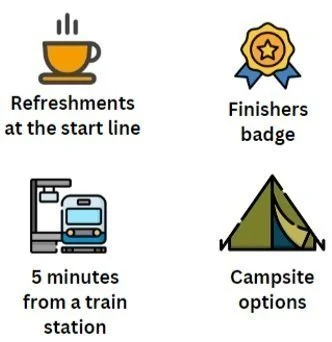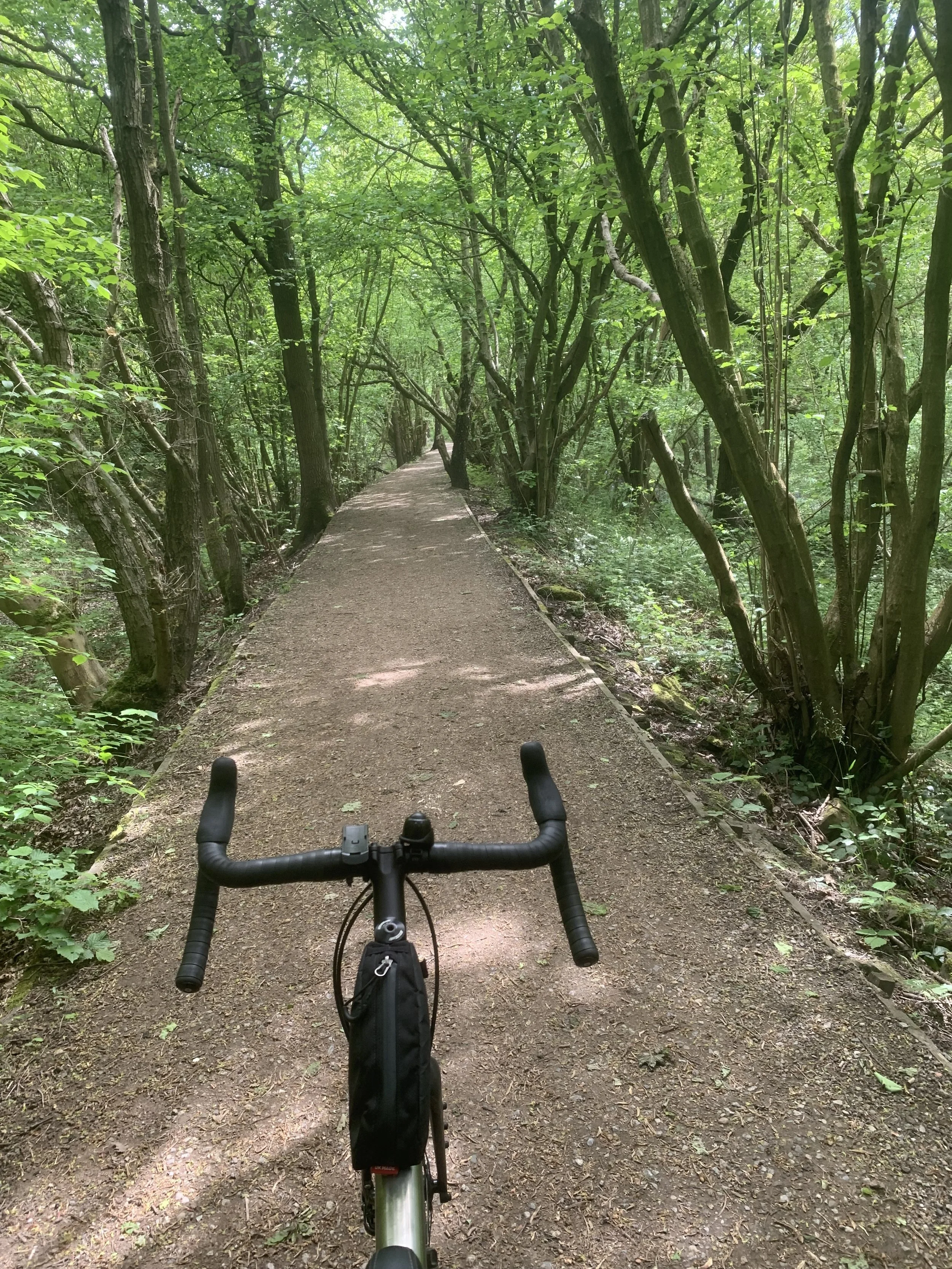The Calder Divide Trail is a long distance circular route that connects the old network of packhorse routes that exist along the watershed of the River Calder in West Yorkshire.
This has gifted us one divide but many trails you can take to explore this diverse landscape:
The Calder Divide Trail is a single fixed 145 mile route for rider, runner or walker
The Calder Divide Trail event has four route options from 100 miles to 160 miles
2025 event
The next multi-day event will be held on the 20th / 21st September 2025. There will be four route options on the event weekend.
two Gpx route files
This route is open for anyone to ride, run or walk at any time in any direction from any starting point. The route is best described as a ‘trail of two halves’.
The western section towards Todmorden is on bridleways and causeways across open moorland and steep valley sides suitable for a mtb. The eastern section towards Castleford is on traffic-free greenways, minor country roads, towpaths and trails on the floodplain suitable for a gravel bike.
MTB route
This gpx has been updated (Feb 2025) to take account of the closure of a section of the Spen valley Greenway due to upgrade of the Pennine rail line. The detour involves a 1.5km section of Dewsbury.
GPX of the 145 mile route of the CDT ---------------------
GPX of the 145 mile route of the CDT ---------------------
Gravel bike route
The ‘Washlands’ route is a ‘red’ grade that is rewarding ride over a number of days and easily linked via the many train stations. This gpx will guide you around the 1.5km detour through Dewsbury (due to a closed cycle bridge). Several sections are on very busy shared spaces with families, walkers, horses and other riders so a bell is useful and best to slow down eg, on Spen Valley Greenway. Saying that the FKT is a little over 13 hours!
Three levels of Trail
(1) ‘Blue’ grade trails: Moderate
The two ‘blue’ routes - one gravel, one mtb - use bridleways with rough surfaces covered by stone, grass and gravel. Both ‘blue’ routes also cover 14 miles on the traffic-free greenway with its smooth tarmac and section of trails with features such as water bars, cattle grids and stream crossings.
A number of tracks have steep ‘off -road’ climbs and long descents, for example down Wessenden valley with its loose gravel and stone surfaces, but there is always the option of ‘hike-a-bike’. After all it is a bikepacking route!
(2) ‘Red’ grade trails: Difficult
A number of the trails on the ‘red’ graded routes are well maintained for example along the towpaths, gravel trails through the Washlands and on the greenway but many others are left to the onslaught of winter rain and frost and so you will encounter many miles of exposed moorland trails with rough and uneven surfaces.
(3) ‘Black’ grade trail: Severe
This route crosses six remote Pennine moorlands with long sections of trail that have deep ruts, steep drop offs, rock gardens and sharp descents. Gravel bikes can cope with such terrain but the ride will be very strenuous.
There are three long, technical and very steep descents 120 miles into the ‘black’ MTB route. They are Naze Lane, Whirlaw Common and the Rodwell descent. The 15 minute film (link above) titled ‘A Bikepacking Adventure in Yorkshire’ has full footage of the first two ‘black’ grade descents.
The ‘black’ MTB route is the ‘original’ Calder Divide Trail that has evolved into different routes to suit different riders.
Three Types of Trail
(1) Bridleways
Bridleways are open access trails that are wide enough for the farmers tractor and hard packed with cobbles, gravel and soil. On the two GRAVEL routes they are well maintained trails as shown on the video clips below of the wooded slope up to Jack Bridge and the long climb up Springs Road. On the two MTB routes many of the bridleways cross exposed and weather beaten moorlands where the trails have deep ruts, large drop off’s and loose rocks.
(2) Causeways
Causeways are stone paths made of cobbles or flagstones. Wool merchants in the 1600’s needed hard wearing paths to get ‘pony trains’ loaded with valuable cargo to market and so paid good money to lay down causeways over the tops of the moors. The Calder Divide Trail links miles of these tough Yorkshire trails.
(3) Greenways
Greenways are traffic free trails with tarmac surfaces laid on top of old railway lines. Greenways give you a safe and easy way to cover many miles along the urban fringe. The Calder Divide Trail links the Pennine moors in the west to the level floodplain in the east via the Spen Valley Greenway and the Ossett tunnel. Each of the five bikepacking routes takes you along the greenway shown below.
watershed
The word ‘watershed’ was originally a geographical term describing the edge of an area of land that captures and drains rain water into streams and onward into a single river that eventually flows into the sea. From that, watershed came to mean dividing line.
The watershed of the River Calder is so much more than this. It is where the wild spaces are. Those bits of the landscape that are still green. Places such as Crimsworth Dean with a bridleway through oak woodlands managed by the National Trust, the Southern Washlands with gravel trails set amongst alder, sedges and willow that thrive along the river edge and Whirlaw Common with its packhorse lane set between high stone walls and heather clad moors.
The watershed of the Calder is not a fixed line, permanently marked on a map. It is a broad divide that separates rivers along a ridge of high ground. In this corner of Yorkshire the watershed is criss-crossed by bridleways, causeways and greenways etched into the landscape over the last 700 years as farmers, labourers and merchants went about their day-to-day lives.
Signage
There is no signage saying ‘Calder Divide Trail’ out on the hills, moors and valleys. The routes of the CDT are on bridleways, Sustrans greenways along the urban fringe, open access moorland, restricted-by ways, sections of the ace Pennine Bridleway and public roads.
Inspirational Bit
“Every trail has its history. It is not there by accident, and every twist it makes once had some historical meaning which we can decipher today, but not often”.
W.G.Hoskins ‘The Making of the English Countryside’







